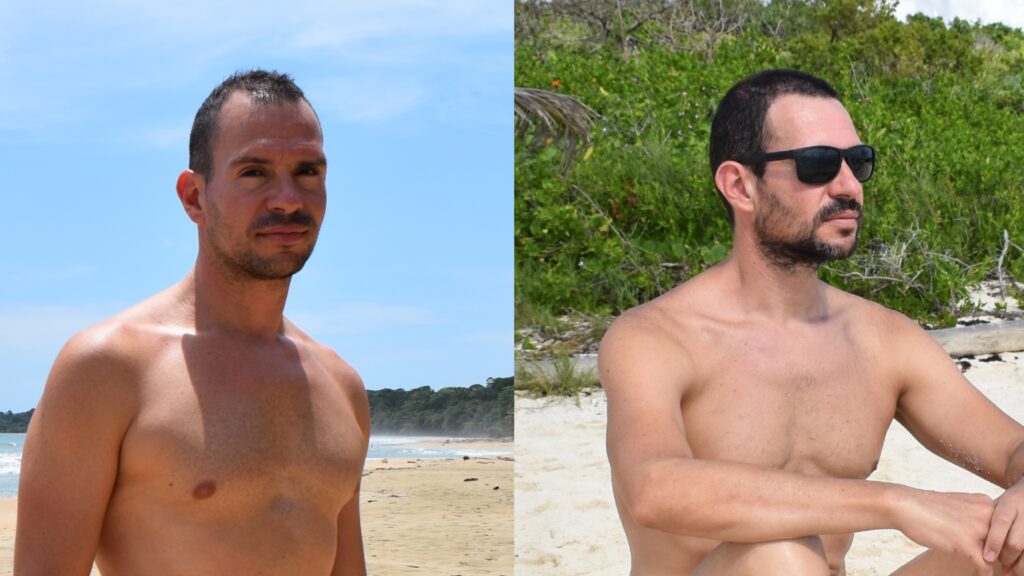Hi there,
We made the trip to Turkey because it seemed like an attractive country due to its history and geography. We also thought that Diego should have a hair transplant, taking advantage of the fact that we were going to be there and that this country is a pioneer in this type of surgery.
We had planned to spend a month in Istanbul as we thought there would be a lot to see. Once I was in Fethiye, I got in touch with a couple of clinics that had been recommended to me by people who had gone from Spain to get the implant.
The place that gave me the best feeling and where things were best explained to me was Anatomic.
Through WhatsApp I sent the photos of Diego’s head and explained how I wanted the shape. The sales agent gave me a budget for 1,600 euros that included all the care they give from the moment you get off the plane: transfers, hotel, translator, operation, medications, pillow, PRP treatment, etc.
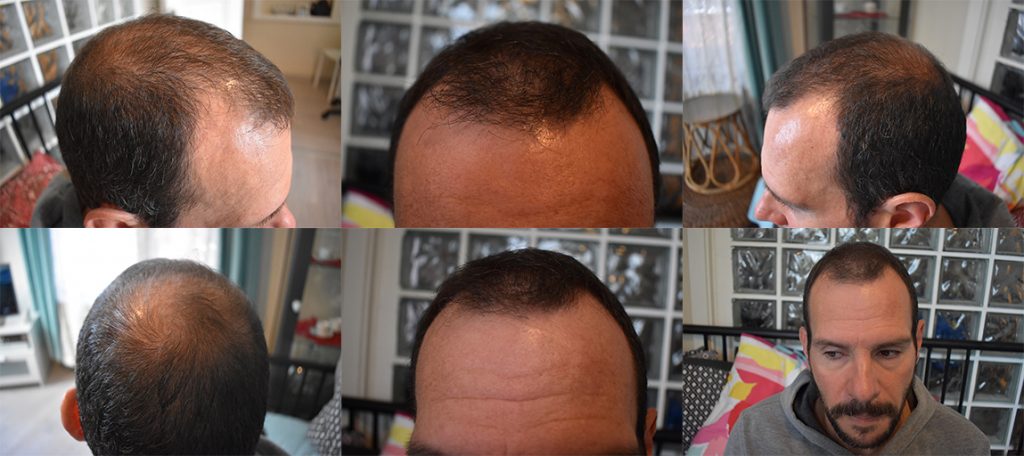
There they are used to the patient getting off the plane, the next day they do the transplant and the next day they catch the plane again to return to their country.
When we arrived in Istanbul, we personally went to the clinic so that the doctor could see Diego. The consultation was super funny because it was me talking to the doctor and telling her the shape I wanted her to do; poor Diego was there in the chair as if he didn’t have any business in that discussion.
I wanted him to have no receding hairline and a straight hairline on his forehead. A guy I follow on IG had just got the transplant for the receding hairline leaving the straight line and I wanted Diego to have it done like that too.
The doctor explained she recommended leaving some receding hair since grafted hair grows differently. In addition, they had already told me on WhatsApp that Diego had a weak donor, so he did not have enough hair to cover everything that was needed.
They gave me a price of 1,300 euros since we didn’t need transfers or a hotel. What the clinic charges is the operation and not the units, as in Spain, for example. The number of units that they put in depends on each person’s donor and can only be known precisely on the day of the operation, which is when they make the drawing and extract the donor. The more you can donate, the more they take and the more they graft you.
That same day we have Diego’s blood tested. In addition, in the five days prior to the operation you cannot consume alcohol or coffee.

The day of the operation I accompanied Diego to the clinic and left him there at 10am. First, he paid, and they took him to the operating room. There they shaved him and made a drawing on his head. Diego told me that the doctor with whom we spoke initially only showed up to approve the drawing of the hair and that’s it. The entire work is done by the assistants.
The operation is done with local anesthesia, but they also put a kind of painkiller in vein so that people are calmer. The latter is optional, and Diego decided to have it too.
After the anesthetic is placed, the donor is removed with a suction device. Then they start transplanting it. Diego says that they made the little holes simply by tapping him with something sharp and there they put the hair.
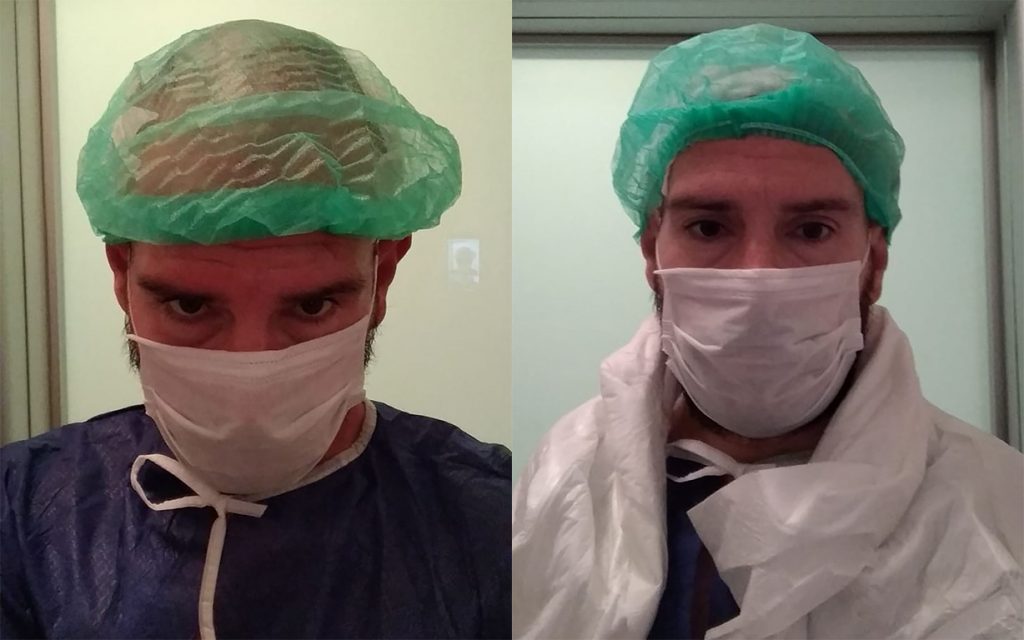
I was at home waiting for the clinic to tell me to go pick him up and whenever he could, he sent me a message.
At 16h, they stopped for lunch, and I was horrified at how late it was. We usually have lunch at 12. The food was terrible and half frozen. I imagined the typical meal with hummus, lentils, falafel, but it was nothing like that.
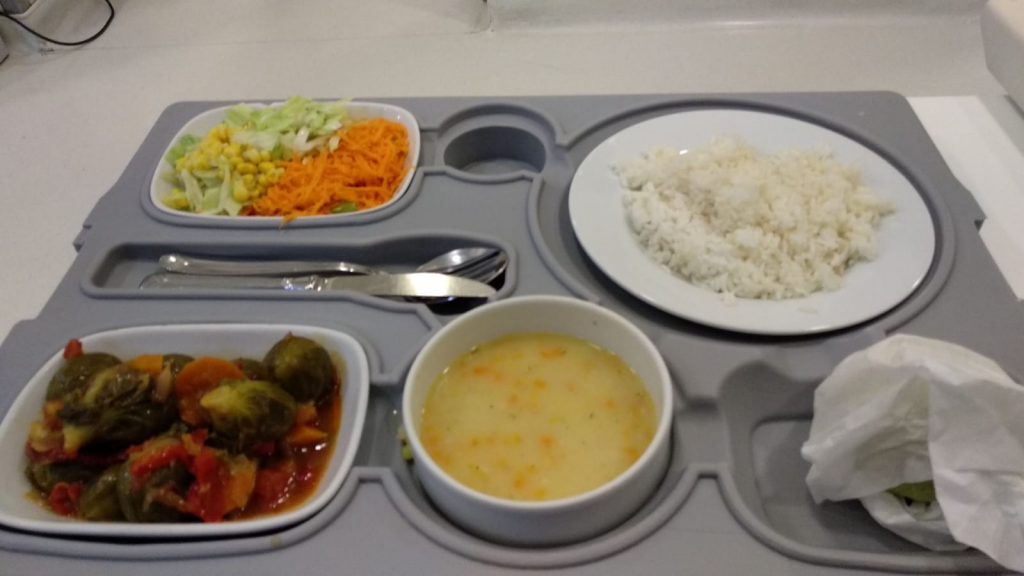
After they finish putting in the entire transplant, they take the blood to extract the PRP, which is then injected into the head to nourish the grafted hair. They recommend PRP every 3-4 months the first year after the transplant.
Diego spent between 7 and 8 hours in the clinic; He tells me that in the last few hours it was torture because he had to rest his neck on a platform so that the donor would not touch anything, and after hours of being pecked on the head, all he wanted was to run away. When I saw him, he had a face of exhaustion that I had rarely seen.
Even so, we went home by subway, especially because there was a lot of traffic and it was worse to take a taxi.
This is how it looked after the transplant:
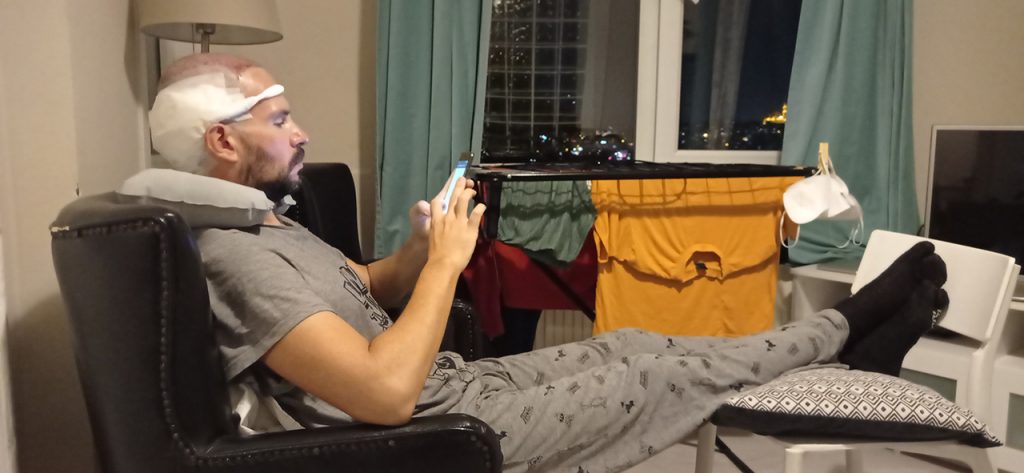
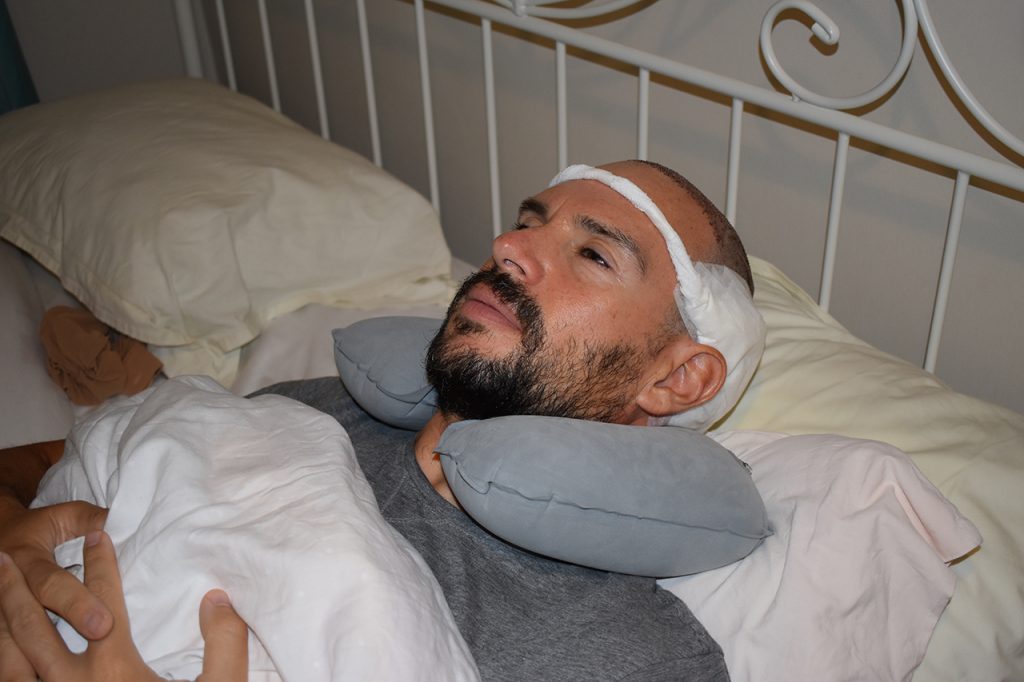
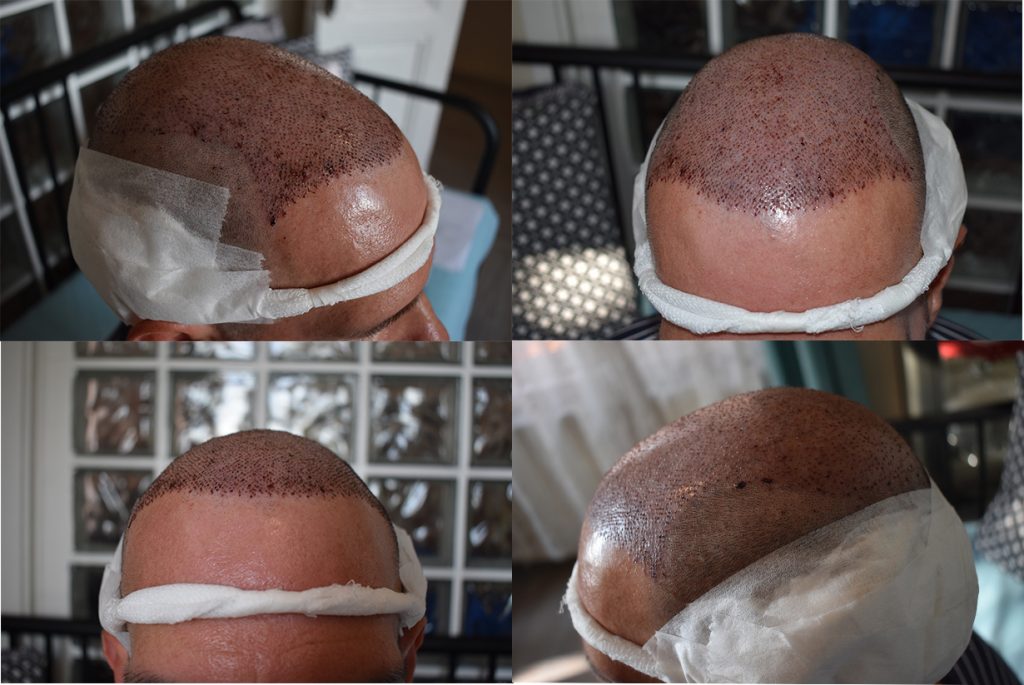
The next day we went back to the clinic to have the bandages removed and the bandana put on. We arrived directly, went up to the operating room floor and immediately the bandages were changed. The girls didn’t speak English, but they knew exactly what to do.
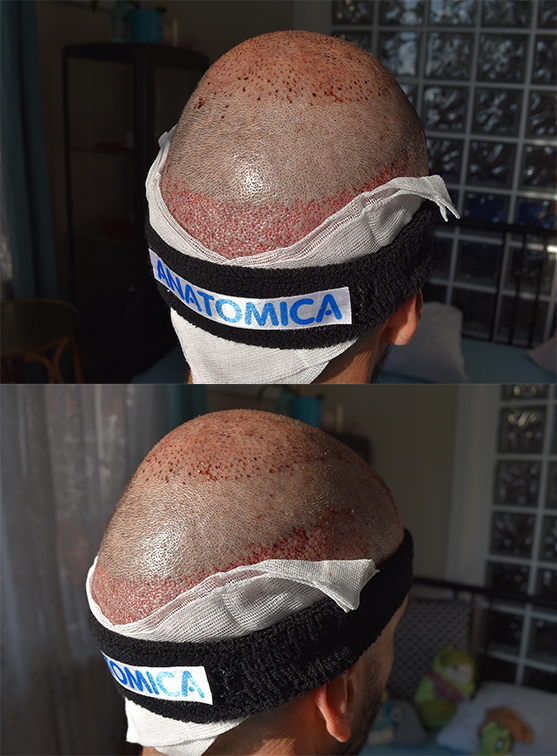
The next day he was already working normally. The only thing is that he had to put the screen higher because he couldn’t put his head down.
After the operation, he had to take a medication for circulation and another for bruises for 3 days. In addition, antibiotic for 14 days and analgesic every time he had pain.
The antibiotic isprescribed for 7 days, but the doctor saw some “micro infections” on his scalp and prescribed them for 14 days. A week later we realized that he was having an allergic reaction and stopped taking the antibiotics; anyway, he didn’t have any infections.
On the second day after the transplant, you had to start washing your hair. First you had to put a moisturizing cream on it and let it act for an hour and then wash it with a special shampoo that they gave you at the clinic. I was pouring water on it with a glass and then they told me that it could be washed with normal water pressure.
The first two days his head smelled horrible, I almost vomited when I smelled it. It was a smell like that of blood with chemical things.
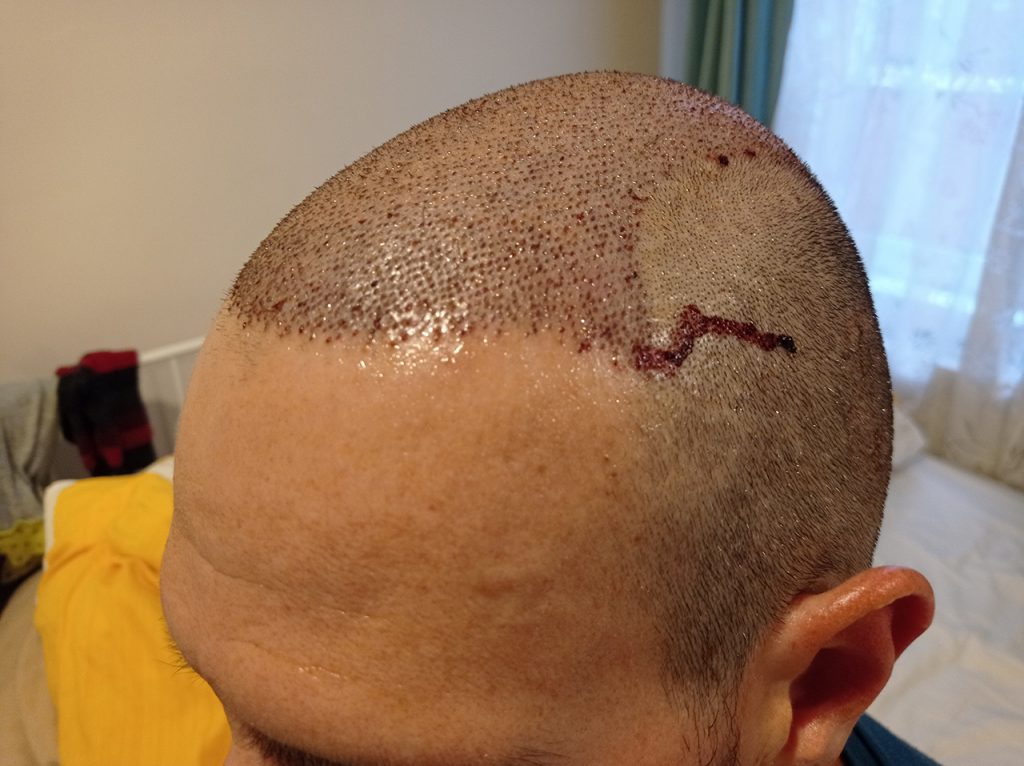
After ten days you can start washing your head rubbing harder and it is assumed that by day ten all the scab and dead skin must have fallen off. Since Diego still had some scab, the doctor ordered him to wash, rubbing with gauze so that everything would come out.
So, the bloody head lasts at most 10 days.
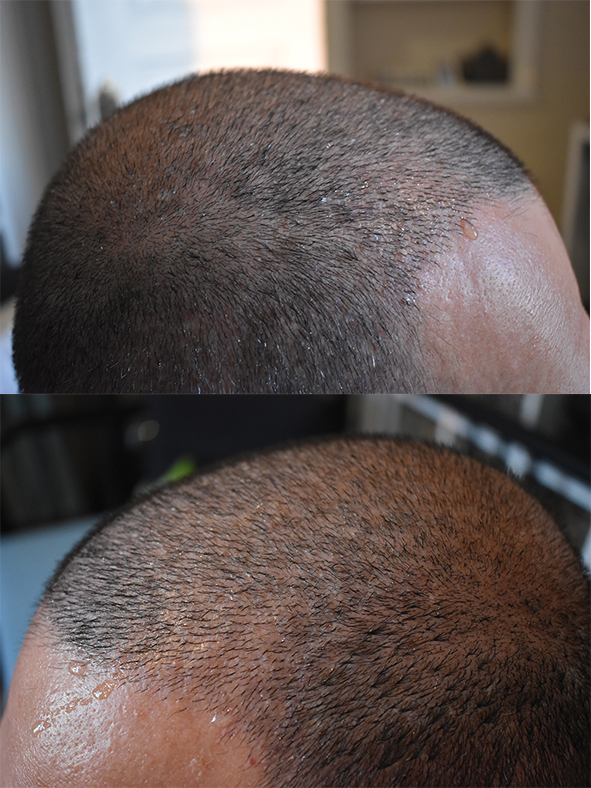
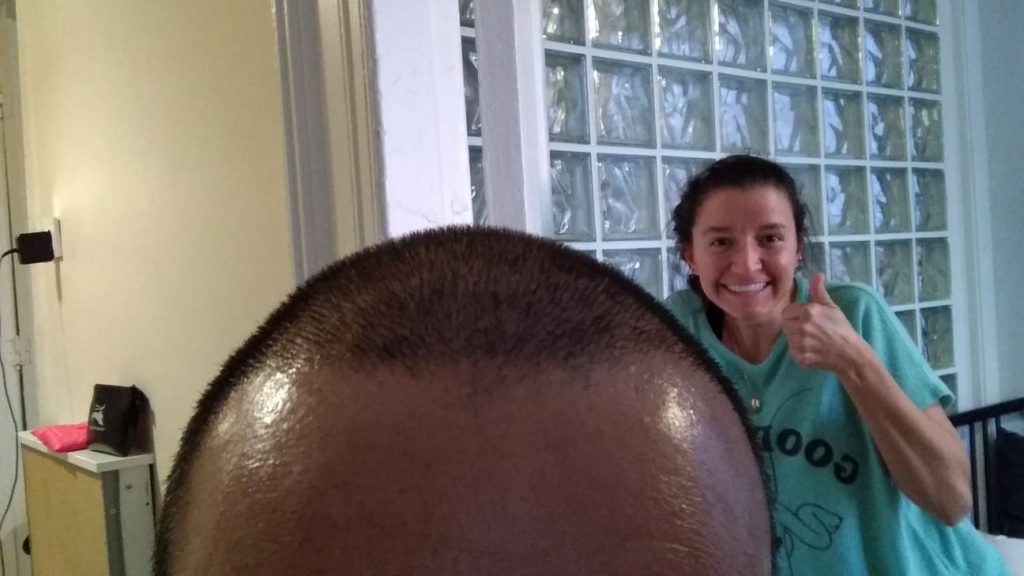
In addition to PRP, they also recommend taking Xpecia, which is a vitamin complex to strengthen hair. We found another brand cheaper with the same composition on Amazon (Vita Turk).
Diego has been using Minoxidil for a few years and after a month of surgery, he was able to use it again
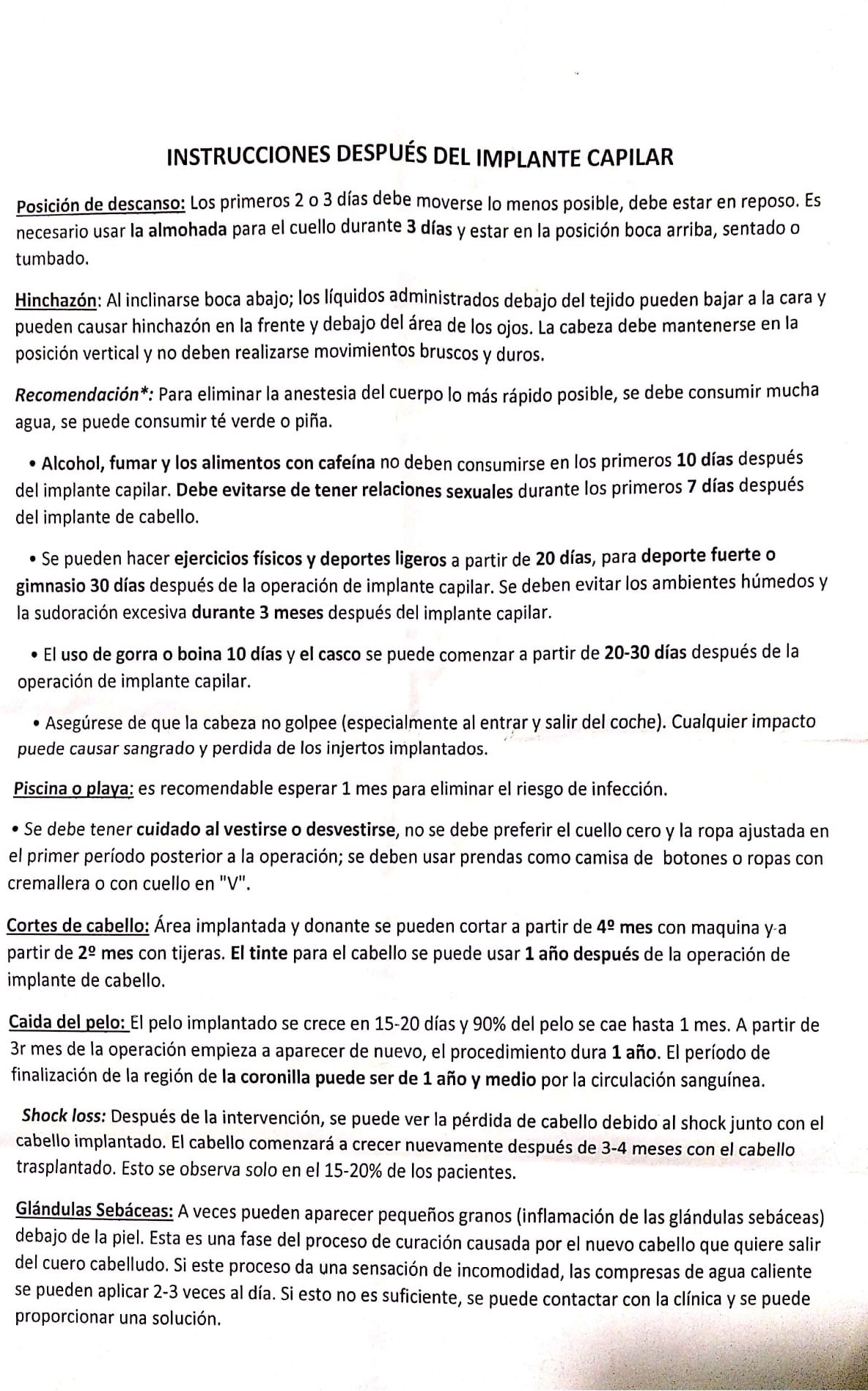
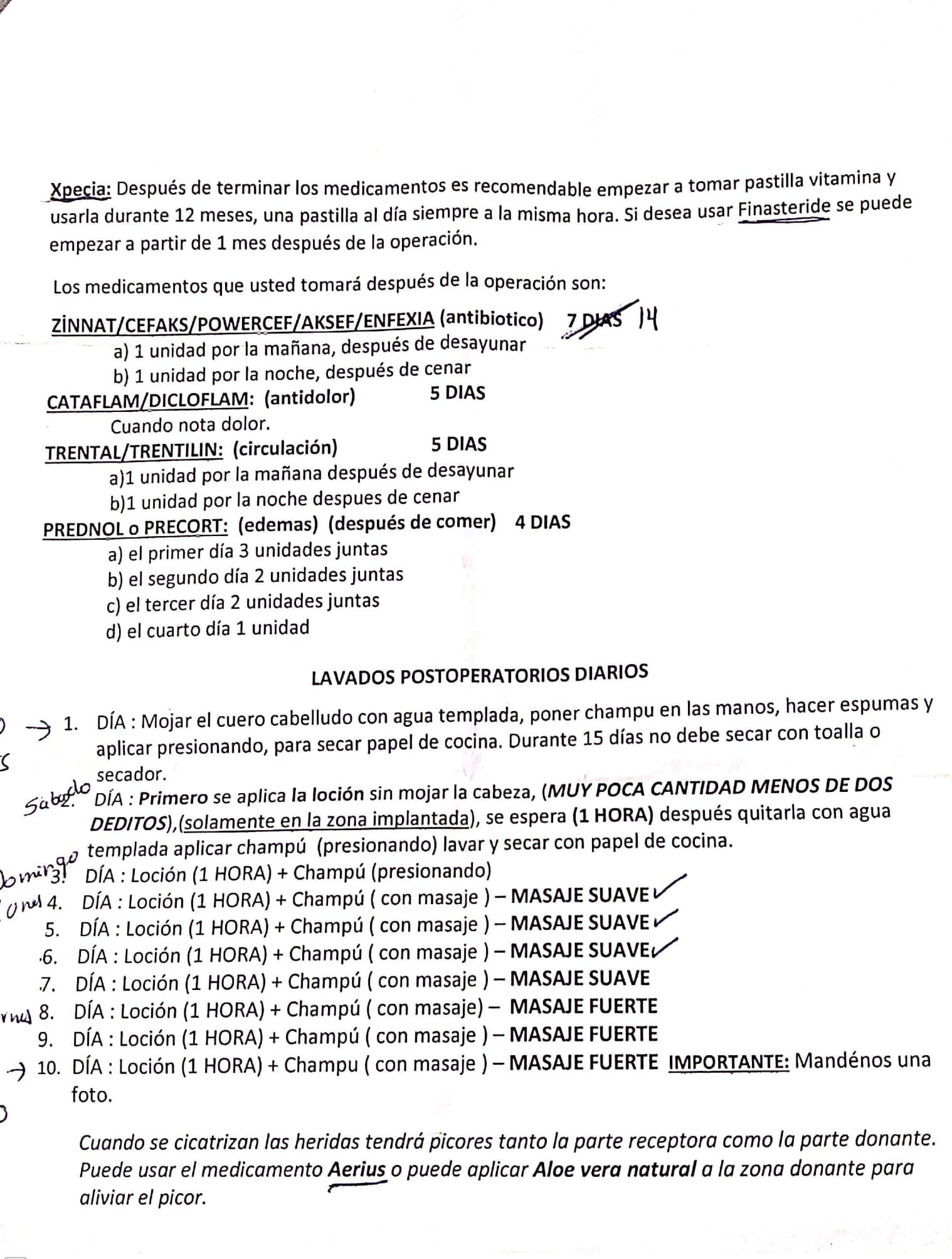
After a month all the grafted hair falls out and the definitive one begins to grow; It is what they call “hair loss shock”. The final result is seen in a year.
Here is the hair after a month:
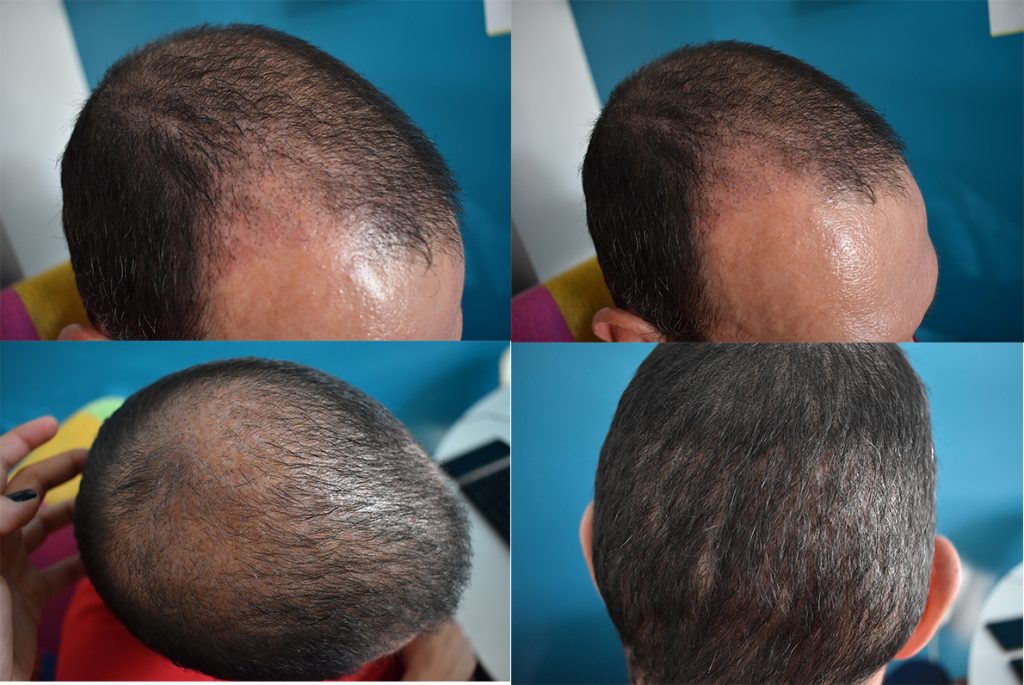
The hair after 2 months:
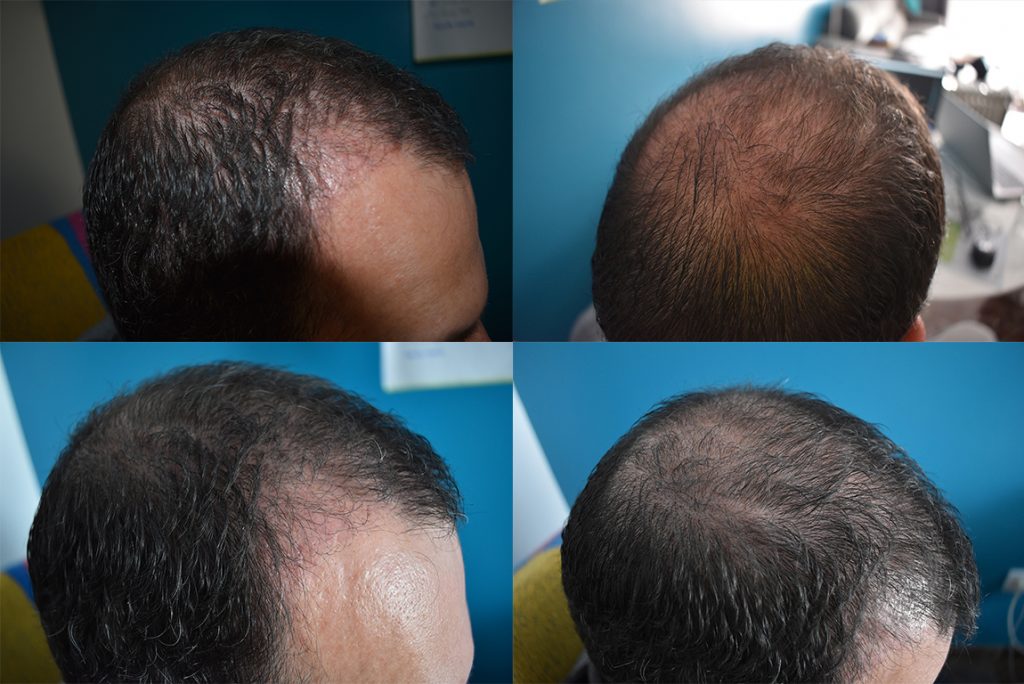
The hair after 6 months:
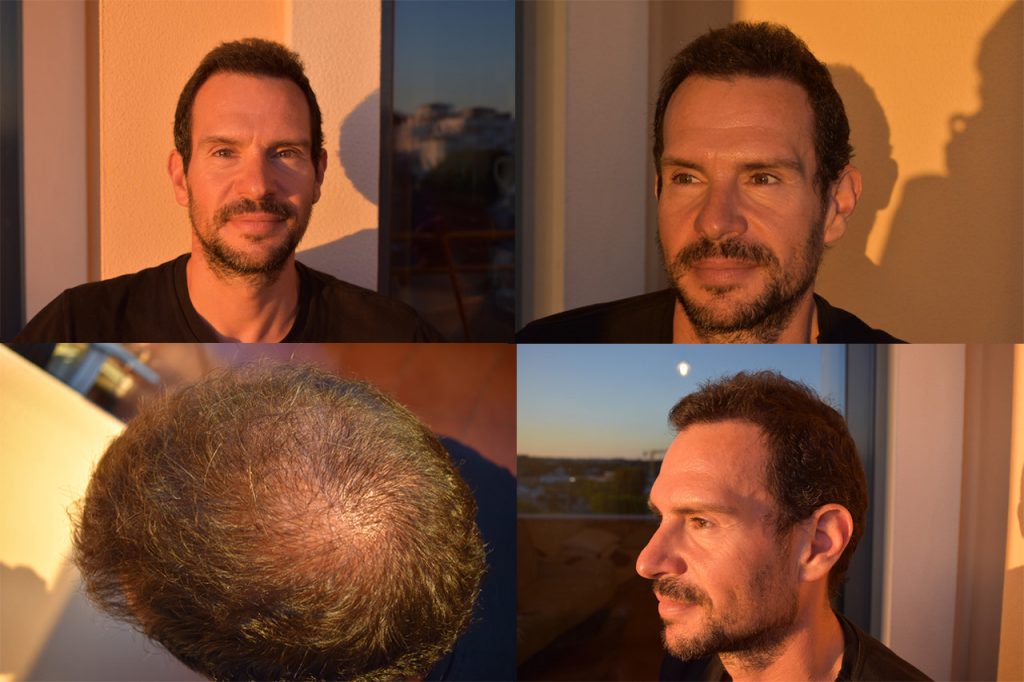
The hair after a year:
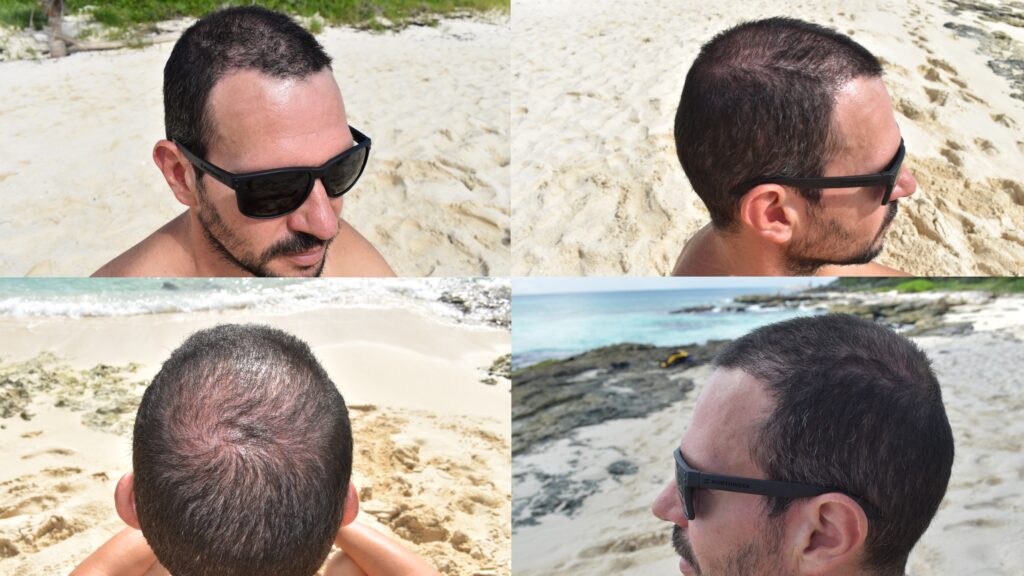
After hair grafting, the hair care routine remains as follows: PRP once or twice a year, minoxidil twice a day, one pill a day for hair growth (VitaTurk), ISDIN anti-fall and anti-dandruff shampoo.
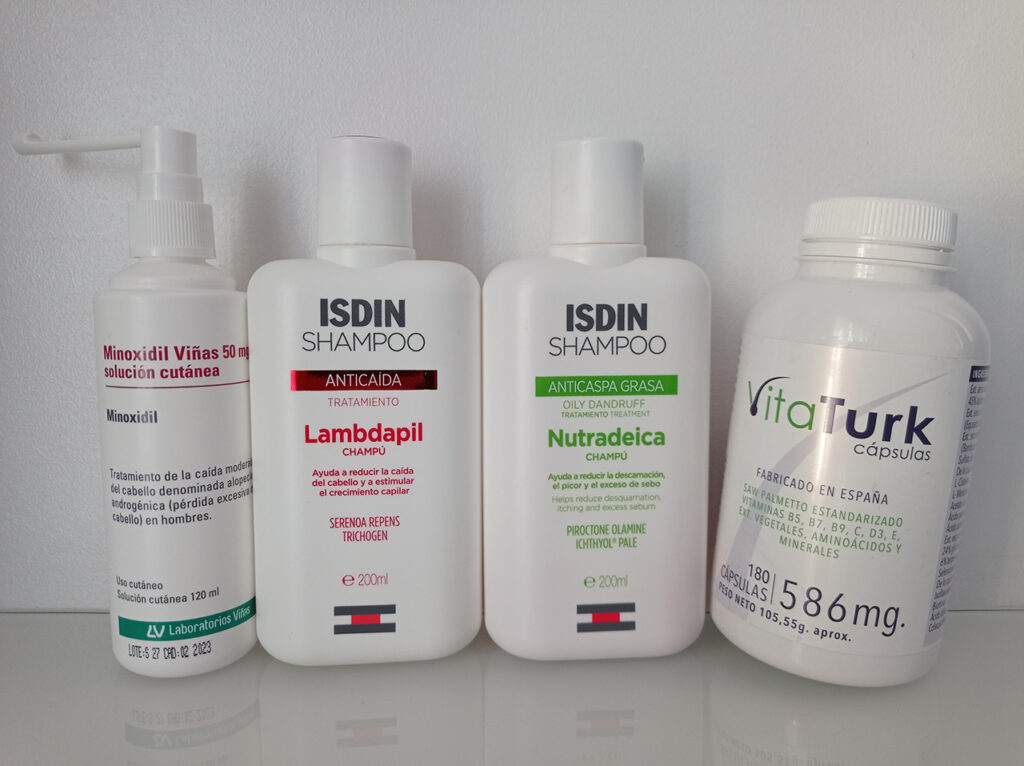
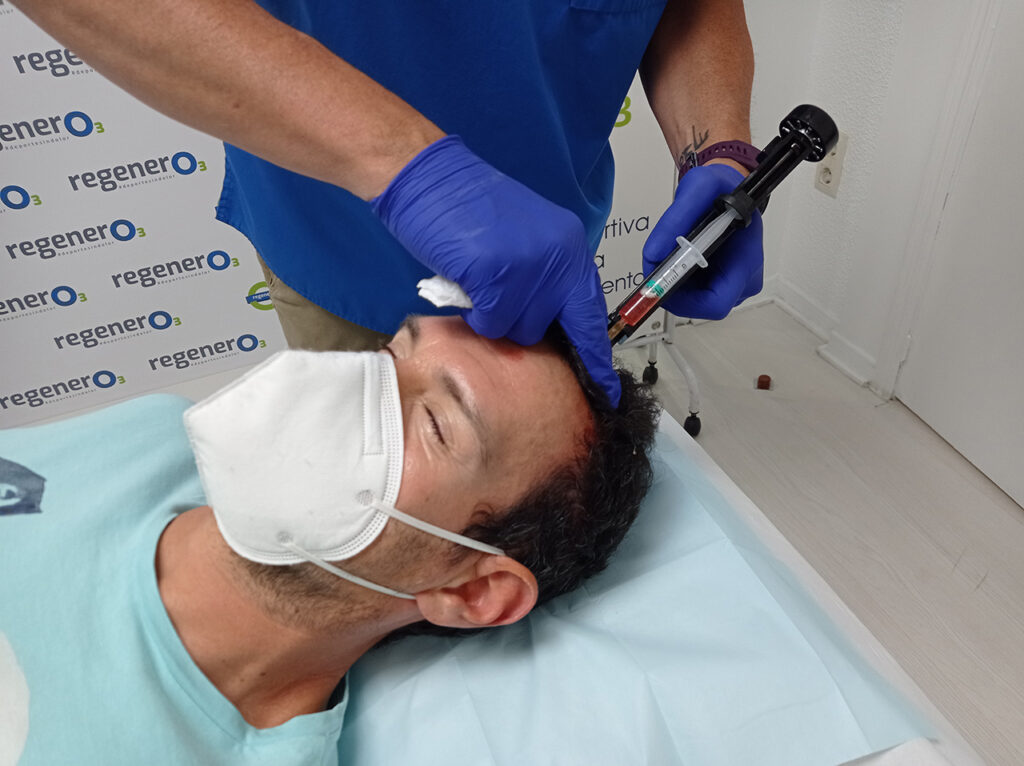
What you should know before surgery
- It is not painless. Every procedure hurts. For this operation, the anesthesia injections hurt and then the position in which you must spend a lot of hours. In addition, you have several days of very bad sleep and pain in the head.
- The head feels strange for the first few months, especially the donor area that feels numb.
- The results are not immediate, you must wait a year to see the results, so you are left with the uncertainty of whether it has worked or not.
- You must wait three months to play sports, sweat and get your head wet at the beach or pool.
- The postoperative is not as bad as in other operations. Diego says that the post-op vision surgery was much worse.
- It is also very important to know that for your hair transplant to last, you must take care of it. You must continue for life with the anti-hair loss shampoo, vitamins, PRP and Minoxidil.
In short, the general evaluation is good and we recommend the clinic. The information at the beginning and the follow-up they did after the operation were correct. As we spent the whole month in Istanbul, they told us that we could even go to have his head washed every day at the clinic. For any questions I also had a WhatsApp to which they responded relatively quickly
They have their package well-structured because the people who go there for surgery don’t even know Istanbul; They arrive, get the procedure, and leave. We were the rare ones who even got on the subway. But they knew how to adapt to us and made us the price without a package.
A not very good detail is that in the clinic we saw many people wearing the masks wrongly or not wearing them at all. Even the doctor had her nose out of the mask almost always and with the global pandemic situation, it was a bit scary.
It is also true that at the Ricart Medical Institute (Valencia – Spain), for example, they do a lot of tests before giving you any treatment for hair loss. In the clinics in Turkey, you go directly to do the transplant without knowing why your hair fell out. Still, it works.
As I always say, it is very important to catch problems and illnesses when they just start. If Diego had gone to a good specialist when his hair began to fall out, he might not have had to get the transplant done. It is also true that he went to two dermatologists in Valencia and one was worse than the other (at that time we didn’t know about Ricart Medical Institute).
Bellow you can find the link to my YouTube channel:

